Essential Photography Tips for Hurghada

As the sun rises over the Red Sea, you’re going to need photography tips for Hurghada if you’re going to capture the best of where ancient Egyptian culture meets modern tourist destination.
This coastal resort offers a perfect canvas for photographers, from its vibrant coral reefs teeming with marine life to the weathered walls of El Dahar’s old town.
Whether you’re capturing the first light painting the El Mina Mosque in ethereal hues or documenting local life in bustling souks, Hurghada presents unique opportunities and challenges for photographers.
Understanding the interplay of intense desert light, coastal conditions, and cultural sensitivities is crucial for truly capturing this part of the Red Sea.
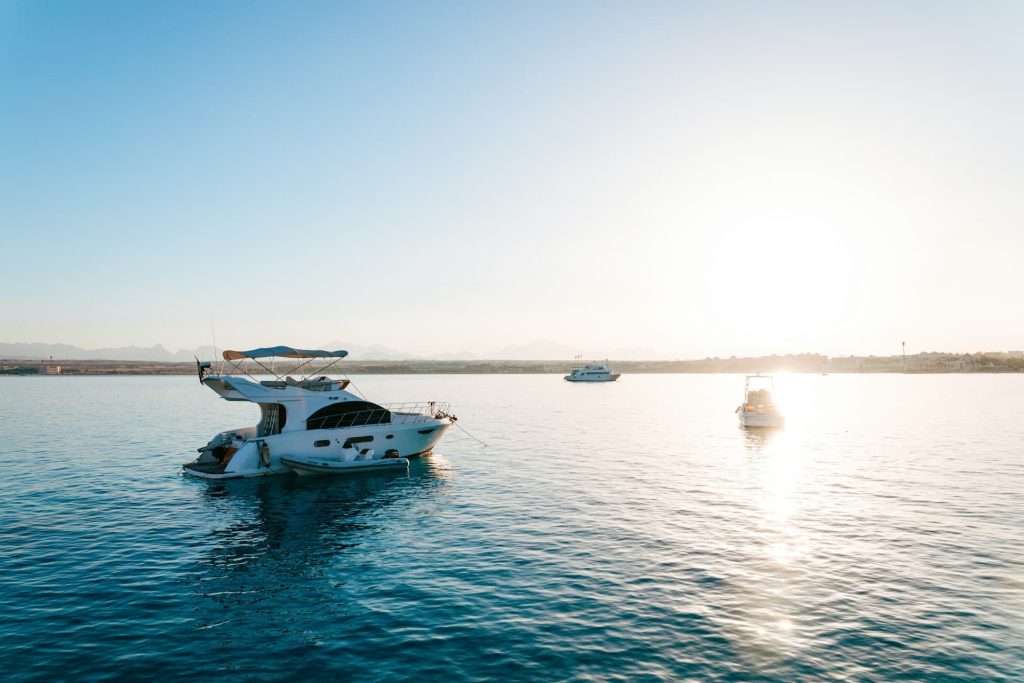
*This site contains affiliate links, where I get a small commission from purchases at no extra cost to you
Photography Tips for Hurghada
Whether you’re capturing the bustling marina, the colourful coral reefs, or the dramatic desert dunes, this Egyptian resort town offers endless opportunities for breathtaking shots.
However, making the most of your photography experience in Hurghada requires more than just a good camera – it’s about knowing the best locations, lighting conditions, and techniques to bring your images to life.
In this guide, I’ll explore essential photography tips tailored for Hurghada’s unique landscapes and lighting conditions.
I’ll cover the best times and locations for photography, practical advice on shooting underwater, and how to make the most of the town’s vibrant culture and natural beauty.

Best Times of Day for Photography in Hurghada
The soft, warm light of early morning (5:30-6:00 AM) and late afternoon (6:00-6:30 PM) offers perfect photography conditions in Hurghada. These golden moments cast gentle shadows and bring out rich colours in landscapes and architecture.
Between 10 AM and 2 PM, bright sunlight creates strong shadows, making it challenging for photography. Consider moving indoors or seeking shade during these hours.
The period just before sunrise and after sunset bathes scenes in cool, even light – ideal for atmospheric shots of beaches and cityscapes.

Essential Camera Equipment for Hurghada Photography
A reliable DSLR or mirrorless camera sits at the heart of your Hurghada photography kit.
For landscapes, pack a wide-angle lens (10-24mm) to capture sweeping desert vistas and seaside scenes. A telephoto lens (70-200mm) helps photograph distant subjects and wildlife.
Beach and desert settings demand proper protection – UV filters and lens hoods shield your gear from sand and sun. A sturdy tripod proves essential for low-light photography at sunrise and sunset, while a quality underwater housing opens up Red Sea photography possibilities.
Recommended Camera Settings for Different Scenarios
For landscapes and seascapes in Hurghada, set your aperture between f/8 and f/11 with ISO 100-400. This combination gives sharp images with good depth. In low light, open your aperture wider (f/2.8-f/4) and increase ISO to 800-3200.
When shooting in bright sun, use faster shutter speeds (1/250 or higher) and lower ISO.
For the beauties of the Red Sea, adjust your white balance settings and opt for wider apertures. At cultural sites and buildings, match your settings to the available light, paying attention to depth of field needs.

Top Locations for Landscape Photography in Hurghada
The pristine Giftun Islands offer white sandy beaches against turquoise waters – perfect for sunrise compositions. At Ras Mohammed National Park, rocky coastal formations create striking silhouettes at sunset.
El Gouna’s marina presents opportunities for boat-filled frames and waterfront architecture shots. The Eastern Desert provides rugged mountain backdrops, while El Dahar (Old Town) offers authentic street scenes with traditional buildings and bustling markets.
Head to Mahmya Beach photography tours early morning for clear waters and unspoiled views.
For dramatic mountain vistas, visit Wadi El Gemal National Park when shadows are long. Remember to carry permits for protected areas and arrive before sunrise to catch the best light.

Capturing the Vibrant Underwater World of the Red Sea
A wide-angle lens works best for photographing vast coral reefs, while macro settings let you focus on tiny sea creatures. Bringing light sources helps restore true colours at depth, as water absorbs light differently than air.
Keep your camera in RAW format for better control when editing. Practice good buoyancy to stay steady without touching coral.
Popular spots like Gota Abu Ramada and Shaab El Erg offer clear visibility and beautiful Red Sea fish.
When near coral gardens, maintain a safe distance and never use flash directly on sensitive marine life. The morning hours typically provide the clearest water conditions for underwater photography in Hurghada’s Red Sea.

Tips for Photographing Local Culture and People
Always ask before taking someone’s portrait in Hurghada – a simple gesture and smile can bridge language gaps. For natural-looking portraits, use an 85mm or longer lens, allowing comfortable distance between you and your subject.
Markets and public spaces offer chances for genuine moments. Early morning light works well for photographing vendors setting up their stalls. At busy spots like El Dahar Souq, step back with a longer lens to catch unscripted scenes.
Learn basic Arabic greetings – they open doors and show respect. Be extra mindful near mosques and when photographing women. Keep religious sites and customs in mind, particularly during prayer times.

Techniques for Desert Photography
Desert landscapes come alive through the thoughtful use of natural lines – follow the curves of dunes and tracks to guide viewers through your frame. Blue Hour and Golden Hour light brings out rich textures in the sand, creating striking shadows across the rippled surface.
Include people, camels, or local wildlife to show the vast scale of the desert setting. Keep your camera safe in sealed bags when not shooting – fine sand can damage sensitive equipment.
For night photography, set up long exposures to capture star trails against the dark desert sky.

Dealing with Challenging Lighting Conditions in Hurghada
The bright Egyptian sun presents unique photography challenges. During midday hours, use a reflector or white cloth to soften harsh shadows on subjects. For better results, shoot in RAW format to retain more image detail for later adjustments.
When working with strong contrast, try graduated neutral density filters to balance bright skies with darker foregrounds. Look for natural shade from palm trees or buildings to create softer lighting. A diffuser held above your subject can create pleasant, even illumination.
Edit with care – subtle adjustments to best camera settings often yield more natural results than dramatic changes. Consider bracketing your exposures in tricky light for more options when processing your images.

Composition Tips for Stunning Hurghada Shots
The rule of thirds brings balance to Hurghada’s landscapes – place the horizon along the upper or lower third line, not dead centre. Position interesting elements like boats or palm trees at intersection points for natural focus.
Adding rocks, shells, or traditional items in the foreground creates depth in your photographs. These elements guide viewers through seaside scenes and desert vistas. In markets and streets, doorways and archways make natural frames for local life.
Water reflections in marinas and tide pools offer opportunities for symmetrical compositions. Try different angles – get low to emphasise sand patterns, or seek higher ground for sweeping views of the Red Sea coast. Best photography camera settings and morning and evening light paints long shadows across buildings and beaches, adding visual interest to your frames.

Post-processing Advice for Hurghada Photographs
Raw processing software like Adobe Lightroom helps manage Hurghada’s high-contrast scenes.
When editing beach and desert photos, make small adjustments to highlights and shadows while keeping colours natural. For underwater images, adjust white balance to counter the beauties of the Red Sea colour cast of seawater.
Use local adjustments to brighten specific areas without affecting the whole image. Keep edits subtle – Red Sea colours should look rich but realistic. Consider creating presets for common Hurghada scenarios to maintain consistency across your photo collection.

Safety Considerations for Photographers in Hurghada
Keep your camera gear close in busy areas like El Dahar market – use a secure camera strap and padded bag. When photographing in remote desert spots, tell your hotel staff your plans and carry extra water, a hat, and sunscreen.
Check weather forecasts, particularly during sandstorm season (March-May). Plan indoor shooting alternatives on very hot days. Keep a basic first-aid kit and local emergency numbers handy.
Mind cultural norms – avoid photographing military buildings or checkpoints. Ask permission at religious sites. Keep a photocopy of your passport and camera insurance details. In quieter areas, work with a local photography guide who knows safe photography spots.

Ethical Photography Practices in Egypt
When photographing in Hurghada, always ask permission before taking close-up photos of people. Many locals appreciate a friendly greeting in Arabic first. At mosques and religious sites, check if photography is allowed and respect prayer times.
Military zones and government buildings are off-limits for photos – pay attention to posted signs. When sharing images online, consider how they might affect local communities and their privacy. Choose respectful representations that show Egyptian culture authentically.
Keep a mindful distance from beautiful Red Sea fish while shooting underwater, as careless movements can harm marine life. Support local photography guides and shops rather than larger tour operators. This helps sustain community businesses and creates authentic connections with residents.
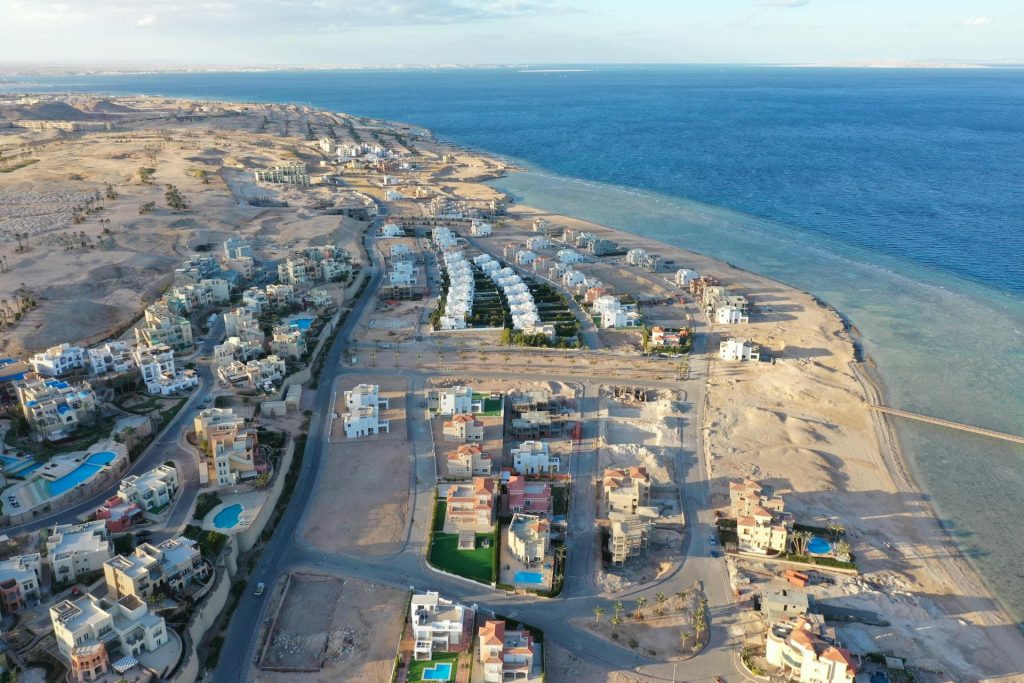
Capturing Hurghada’s Unique Architecture
The El Mina Mosque presents striking photo opportunities during the blue light before sunrise. Frame its minarets against the dawn sky, using wide-angle lenses (16-35mm) to include the full structure and its reflections in surrounding pools.
Old Town’s traditional buildings tell stories through weathered walls and ornate doorways. Position yourself at corners to catch morning light playing across Islamic geometric patterns. The mix of historic and modern buildings near the marina shows Hurghada’s changing face.
Photograph the Coptic Church’s distinctive features in late afternoon, when shadows accent its architectural details. Remember to ask permission before taking photos inside religious buildings and respect quiet zones during services.
Night Photography Techniques for Hurghada’s Cityscape
A steady tripod forms the foundation for night shots lasting 15-30 seconds. Set your ISO low (100-400) to keep noise minimal while photographing the marina’s glittering lights. Position your camera near the waterfront to catch boats’ reflections in the calm evening waters.
The Marina Boulevard offers clear views of lit buildings against the dark sky. Wait for the blue hour and golden moments just after sunset when artificial lights begin to shine but some colour remains in the sky. Frame your shots carefully to include both traditional architecture and modern structures.
Remember your torch and spare batteries for night shooting. Work with a friend when photographing after dark, especially in quieter areas. Consider bracketing your exposures to blend later, capturing both bright lights and shadow details.

Tips for Photographing Hurghada’s Beaches and Coastline
A polarizing filter brings out the natural blues and greens of Hurghada’s waters while reducing glare.
Position palm trees, traditional boats, or weathered jetties in your foreground to add local character to seaside compositions.
Try slow shutter speeds (1/15 to 1 second) to create silky water effects around the rocks at Mahmya Beach and Orange Bay. Get close to the sand for detailed shots of ripple patterns and shells during the best photography camera settings and soft morning light.
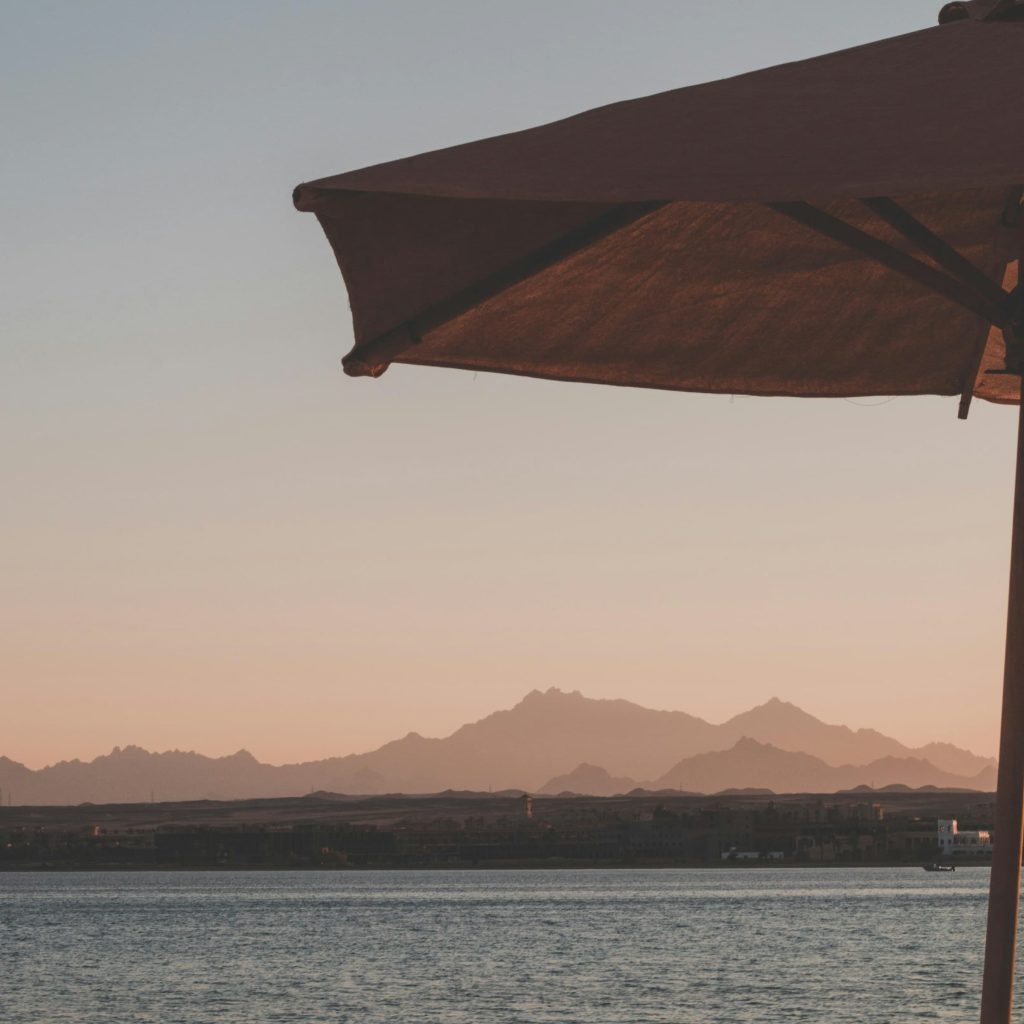
Capturing Wildlife in Hurghada’s Natural Habitats
Wadi El Gemal National Park offers excellent opportunities for photographing desert wildlife. A 200-600mm telephoto lens helps maintain safe distances while capturing clear shots of gazelles and desert foxes. Blue Hour and Golden Hour light provides the best lighting conditions when animals are most active.
Study animal patterns and habits before heading out – many desert creatures follow regular routines. Listen for bird calls and watch for movement in vegetation. Keep quiet and still, using natural features as cover. A good spotting scope helps locate subjects before setting up camera gear.
Stay on marked paths in protected areas and carry proper permits. Never bait or feed wildlife for photos. When photographing birds near the coast, keep low and move slowly to avoid startling them. Remember that desert creatures need space – if an animal shows signs of stress, back away quietly.

Photographing Hurghada’s Bustling Markets and Bazaars
Fast prime lenses (35mm or 50mm) work well in El Dahar Souq’s narrow walkways and changing light. These lenses let you work quickly while maintaining image quality in dimly lit corners and stalls.
Begin with wider shots showing the market’s atmosphere, then move closer to photograph spice mounds, handicrafts, and traditional goods. Early morning brings blue hour photo opportunities and quieter moments as vendors arrange their displays.
Remember to greet stallholders with “Sabah el-kheer” (good morning) before taking photos. Many appreciate seeing their images on your camera’s screen afterwards. Keep your movements slow and deliberate in crowded spaces, being mindful of shoppers and traders.

Best Practices for Aerial Photography in Hurghada
A remote-controlled aircraft needs proper clearance before taking flight in Hurghada. Check local rules and obtain necessary paperwork through the Egyptian Civil Aviation Authority. Keep your aircraft below 120 metres and maintain visual contact.
For clear images, fit ND filters to your drone’s camera when shooting in bright sunlight. Early morning and late afternoon provide gentle shadows across buildings and coastline. The marina, desert edges, and beaches offer striking patterns when viewed from above.
Try both straight-down and angled views to show Hurghada’s mix of sea, sand, and structures. Watch the weather – blue hour photo ideas typically bring calmer conditions with less wind. Keep your distance from airports, military zones, and crowded areas.
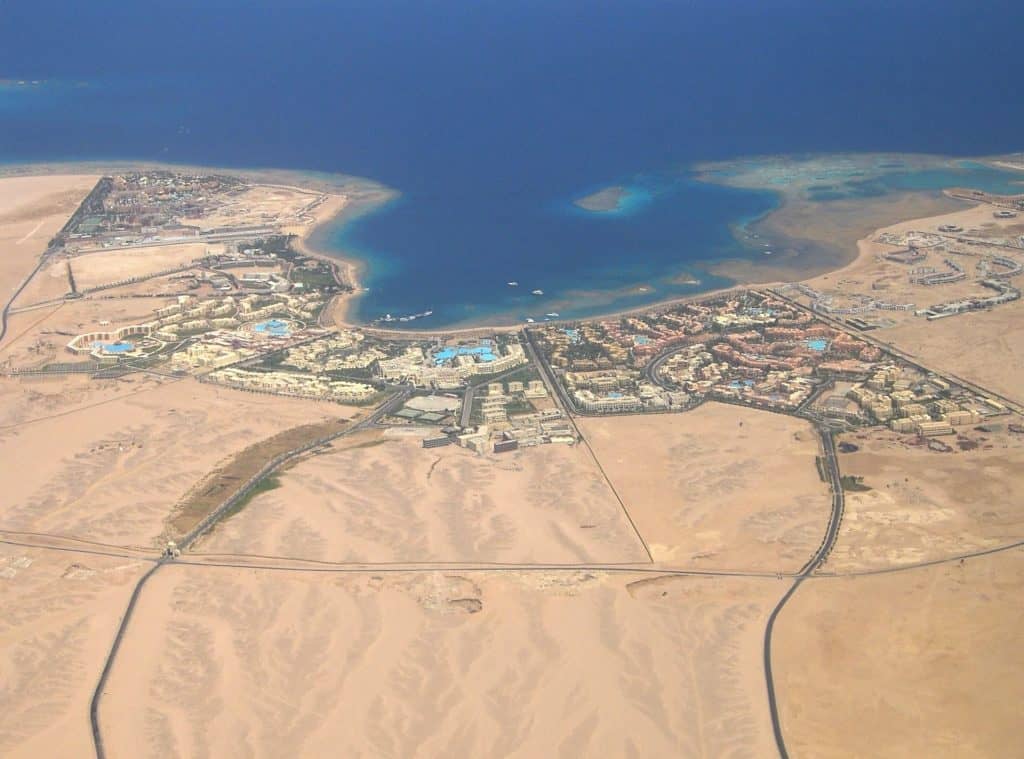
Techniques for Photographing Hurghada’s Sunsets and Sunrises
Morning and evening light create magical moments along Hurghada’s coastline. Visit spots like Mahmya Beach or the Marina Boulevard beforehand to plan your composition. The blue hour and golden light between 5:30-6:30 AM and PM paints the sky in warm oranges and pinks.
Set your camera to f/16-f/22 when including the sun, protecting your sensor while creating striking sunburst effects. Frame silhouettes of fishing boats and palm trees against the colourful sky. Position yourself where water reflections double the impact of dawn and dusk colours.
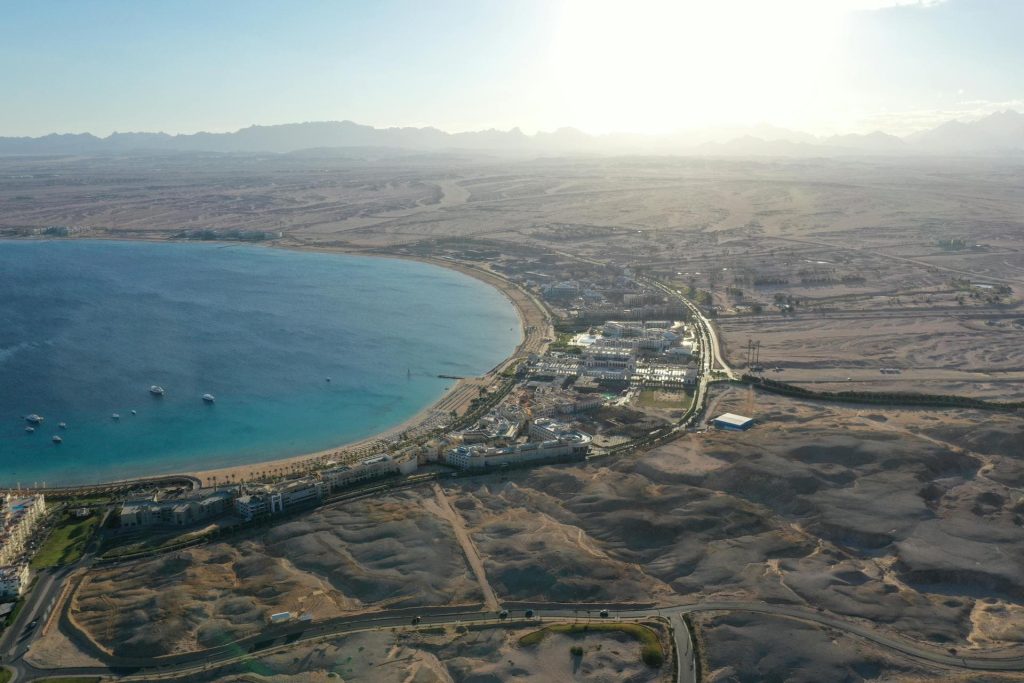
Tips for Creating a Cohesive Photo Series of Hurghada
Plan your series around a central theme like “Morning Light in Old Town” or “Faces of the Fish Market.” Choose subjects that link naturally – traditional doorways, market vendors etc.
Keep your photo style steady throughout. Set similar exposure values and white balance for consistent colours. Mix broad views with close details while maintaining your chosen mood.
Place pictures thoughtfully – start with scene-setting shots, then show smaller stories within. Think about colour matches between neighbouring images when arranging your final set.
Photography Tips FAQS
The best times for photography in Hurghada are during the golden hours—shortly after sunrise and just before sunset. These times provide soft, warm lighting that enhances landscapes, seascapes, and portraits.
For underwater photography, set your camera to a fast shutter speed (1/250s or higher) to capture moving marine life clearly. Use a wide aperture (f/2.8–f/5.6) to let in more light, and increase ISO as needed.
Yes! Modern smartphones have powerful cameras capable of capturing stunning photos. Use HDR mode for balanced lighting, adjust focus manually for sharpness, and take advantage of built-in night mode for low-light conditions. An underwater smartphone case is essential for capturing marine life without damaging your device.
To prevent overexposure, lower your ISO to the lowest setting (e.g., ISO 100) and use a small aperture (higher f-stop like f/11–f/16) for landscapes. A polarizing filter helps reduce glare and enhances colors, while using exposure compensation (-1 or -2 stops) can prevent blown-out highlights in extreme sunlight.
My Final Thoughts
Success in photographing Hurghada comes from blending technical expertise with cultural awareness and patience. From the golden shores of Mahmya Beach to the labyrinthine streets of El Dahar, each location demands its own approach, timing, and sensitivity to local customs.
Remember that creating memorable images of Hurghada isn’t just about mastering camera settings – it’s about understanding the rhythm of the city, respecting its people, and capturing the authentic spirit of this Red Sea paradise.
